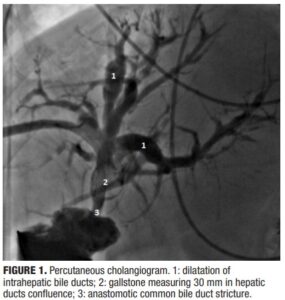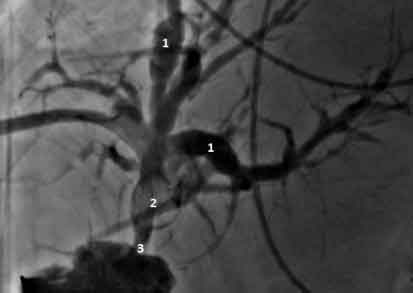HIGHLIGHTS
- Intrahepatic biliary stone disease is a difficult condition to treat, with high recurrence rates, with potential short- and long-term complications. • Removal of biliary stones via intraductal access can be achieved endoscopically or percutaneously, with preference for cholangioscopy-guided laser lithotripsy in complex cases.
- The authors present a case of cholangioscopy with percutaneous laser biliary lithotripsy for the treatment of intrahepatic biliary stone disease associated with biliary stricture following biliodigestive anastomosis due to bile duct injury following cholecystectomy.
ABSTRACT – Background –
Intrahepatic biliary stone disease is a difficult condition to treat, due to anatomical complexity of biliary tract, association with colestasis, and high recurrence rates, with potential short- and longterm complications, such as cholangitis and secondary biliary cirrhosis. Removal of biliary stones via intraductal access can be achieved endoscopically or percutaneously, with preference for cholangioscopy-guided laser lithotripsy in complex cases. The surgical approach, despite its prolonged results, is a more invasive and risky procedure. The authors present a case of cholangioscopy with percutaneous laser biliary lithotripsy as an option for the treatment of intrahepatic biliary stone disease associated with biliary stricture following biliodigestive anastomosis due to bile duct injury following cholecystectomy, a safe and effective alternative with low morbidity and satisfactory outcomes in follow-up. Keywords – Cholangiography, lithiasis, lithotripsy.
AUTORES
Alan Junior de AGUIAR1, Paula Heroso MOREIRA1, Fernanda Biasi da CUNHA1, João Vitor BACARIN2, Pedro Henrique Batista SANTINI2 and Eduardo Aimore BONIN3



